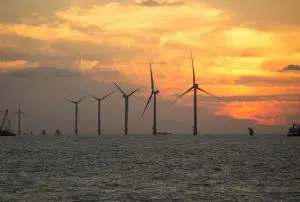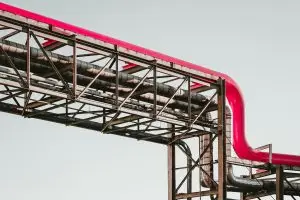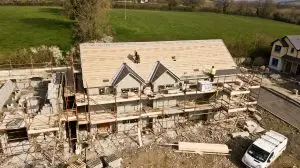1. Hinkley Point C running to schedule and soon to meet major milestone
Hinkley Point C is about to reach a key milestone in its construction; the pouring of the final concrete of the common raft, the main part of the reactor’s foundations. The common raft will be the base of the Unit 1 reactor and is made of reinforced concrete with embedded pipework, tanks and fixings for equipment. It will ensure the stability of the reactor whilst safeguarding and fuelling buildings that rest upon it. This stage in construction is called J0 and marks the beginning of building on the nuclear power station’s above-ground structures.
(EDF Energy, Hinkley Point C on track to reach key milestone, 30 May 2019, Link)
2. Science minister emphasises role of international fusion research in the modern industrial strategy
Chris Skidmore MP, Interim Minister of State for Energy and Clean Growth, addressed UK staff at ITER, a nuclear fusion megaproject, on 29 May 2019. During this address, he thanked them for their efforts and reassured then that international science collaboration would be at the heart of the UK’s modern industrial strategy. He proceeded to say that ‘science and innovation do not recognise borders, which is why we must always work as part of a global endeavour to solve challenges and seize the opportunities of tomorrow.’
(BEIS, Science Minister thanks ITER staff for international fusion research endeavour, 30 May 2019, Link)
3. NIA responds to IEA report highlighting risks of phasing out nuclear
On 28 May 2019, the International Energy Agency (IEA) published a report about the role of nuclear energy in decarbonising. The report also highlights factors that will potentially contribute to a future decline in nuclear generation. Commenting on the report the Nuclear Industry Association (NIA) said that ‘The International Energy Agency has confirmed what many have been warning for years, that nuclear is the backbone of low-carbon electricity generation. Without it, we are likely to see a huge increase in CO2 emissions and an increase in electricity bills for consumers.’
(International Energy Agency, Nuclear Power in a Clean Energy System, 28 May 2019, Link)
(Nuclear Industry Association, Nuclear Industry Association responds to International Energy Agency report, 28 May 2019, Link)
4. New framework agreement granted to Jacobs
Dounreay Site Restoration Limited (DSRL) has awarded a four-year framework agreement to Jacobs. As part of the framework, they will be expected to deliver the construction of a size reduction facility, shaft and silo decommissioning and demolition of historic active laboratories amongst other things. The total value of the work is estimated to be worth around £ 400 million. This is part of the DSRL move to take the site into a new phase of decommissioning. This next phase involves retrieving historic wastes from the shaft, silo and low-level waste pits before repackaging and consigning them to modern waste facilities.
(Nuclear Industry Association, Jacobs Secures New Framework Agreement, 30 May 2019, Link)
5. Cavendish nuclear pioneers technology to transform decommissioning
The new technology, called In Cell Decommissioning System (IDS), brings together three existing technologies: the RadScan™ 3D gamma dose rate scanning technology of Cavendish Nuclear, the robotic laser-snake arm of OC Robotics and the VR expertise of Babcock. The end product is a remotely-operated platform that provides greater visibility of hazards whilst protecting workers from radiation. The IDS’s functional capabilities can be adapted using a range of deployment systems and tools due to its modular form.
(Cavendish Nuclear, Technology to Transform the Decommissioning of Redundant Nuclear Facilities, 24 May 2019, Link)
Brevia Consulting provides straightforward political advice and support to businesses and organisations.
Discover how Brevia can provide public affairs support to your organisation by calling the Brevia Energy Team on 020 7091 1650 or emailing contact@brevia.co.uk.




